The Dutch changed the course of South African history, culture, and identity the moment they first stepped foot in what is now Cape Town.
The history of the Dutch in South Africa is a two-sided coin. Many regard the Dutch settlers as pioneers in establishing trade routes and as the forefathers of Afrikaner culture.
Yet, their involvement in the slave trade and the invasion of African land cannot be overlooked.
The influence of the Dutch, seen in the Afrikaans language, Cape-Dutch architecture, and the distribution of ethnic groups (among many other things) are still actively shaping South Africa as we know it today.
The Dutch arrival in the Cape
While the Portuguese were the first Europeans to set foot in southern Africa, naming the area of today’s Cape Town as The Cape of Good Hope, it was the Dutch who established the Cape Colony in 1652.
Initially, the colony was to serve as a trading post en route to Asia, supplying the Dutch East India Company (VOC) ships with fresh food and water, and a place to stop for rest.
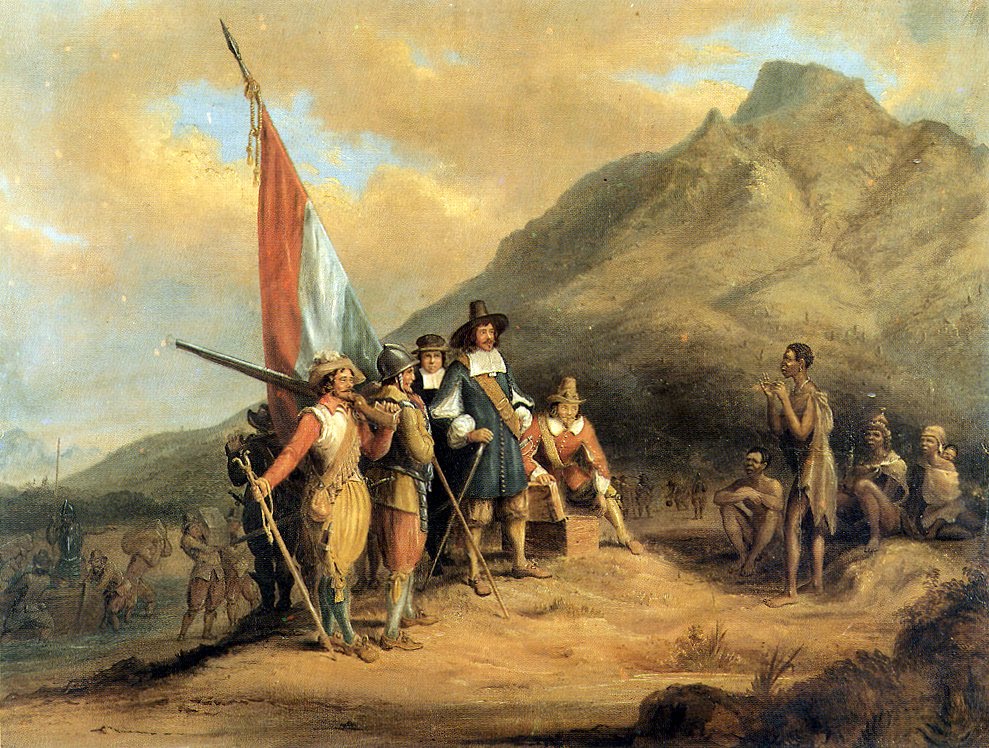
Prior to the arrival of Europeans, the land was already occupied by the Khoekhoe (or Khoikhoi) people, whose way of life revolved around hunter-gathering and cattle herding.
The Dutch traded with the Khoekhoe for a while, exchanging tobacco and brandy for fresh meat.
But by the late 17th century, war had broken out between the United Provinces of the Netherlands and both Britain and France in mainland Europe.
British and French interests in the Indian Ocean pushed the Dutch to establish a permanent colony in the Cape to protect their trading routes. They began expanding settlements into the traditional grazing lands of the Khoekhoe.
Conflict erupted as attacks and counter-attacks ensued between the Dutch and Khoekoe in what snowballed into the Khoekhoe-Dutch wars (1659–1660 and 1673–1677).
European diseases also decimated Khoekhoe populations, and they were increasingly pushed out of their lands.
The conflict was eventually resolved with a peace treaty, in which the Khoekhoe had to offer 30 cattle to the VOC annually and vow never to attack Dutch settlements again.
By the end of the 18th century, without their grazing lands, the Khoekhoe social structure had collapsed and the ethnic group had virtually vanished.
Historians believe many of the Khoekhoe were forced to work for the Dutch, or acculturated with Bantu-speaking African ethnicities from the north.
The Dutch slave trade in South Africa
Many employees of the VOC retired to the Cape Colony, where they were given land to farm on the condition they sell their crops to the VOC at a fixed price.
The farms were very labour intensive, so the Vryberghers (free citizens) imported slaves from Angola, Madagascar, Mauritius, Mozambique, and Asia (Dutch East Indies and Dutch Ceylon) to work the land.
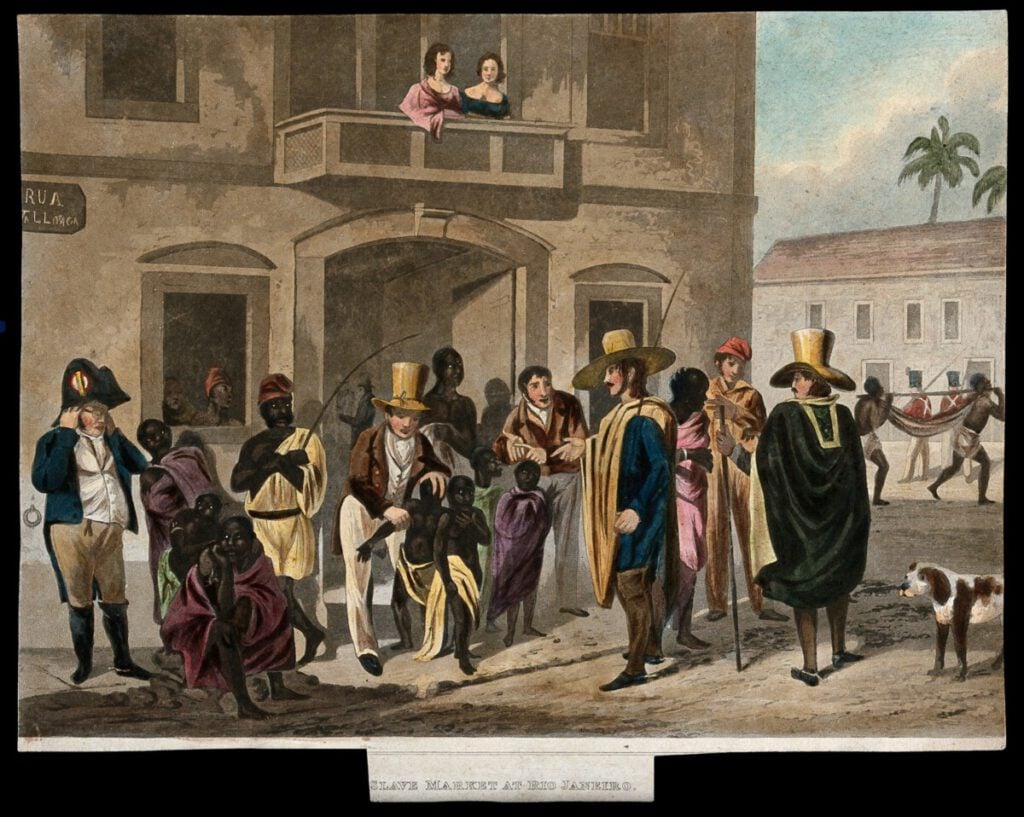
However, the also VOC owned slaves of their own, the first of which were brought from Angola in the Amersfoort and Hasselt vessels, establishing the Cape as a slave colony.
With poor living conditions, mortality amongst the slaves was high and the Dutch settlers were continuously importing new slaves to the Cape.
Over 150 years, around 40 slave voyages were sent from Cape Town, bringing back around 4,300 slaves who survived the journey.
As a halfway point between Asia and Europe, the Cape Colony also resupplied many VOC slave voyages passing through, including those which would go on to transport Africans to slave markets in the Americas.
The Dutch shipped between 550,000–600,000 Africans in the Atlantic Slave Trade alone.
How the Cape Colony impacted South African demographics today
Today, around 1.27 million people living in South Africa are Asian South Africans (2.5% of the population), mostly people of Indian descent whose ancestors were brought over as workers by the British and Dutch.
Cape Malay culture is also unique to South Africa, born in the Javanese and Malaysian slave communities of the Cape Colony.
But Asian slaves also later intermarried with those from Madagascar and other parts of Africa, contributing to what is known as the “coloured” community in South Africa (around 8.8% of the population today).
They are distinct from the black African communities which amount to 79.4% of today’s 59.7 million people.
Around 9.2% of modern South Africans are white, with predominantly Dutch, German, French, and British ancestry.
However, centuries of life in South Africa has blurred the lines between racial and cultural groups, giving many South Africans a complex combination of ethnic backgrounds.
British rule and the Great Trek
Back to our history lesson: in 1795, the British invaded the Cape peninsula and took over the Cape Colony (including Cape Town) from the Dutch.
Due to the British Slave Trade Act of 1807, the first wave of British settlers in the Cape (1820) were not permitted to own slaves, and the importation of slaves was banned in all British colonies.
When slavery across the Cape was abolished in 1834, the British also passed the Amelioration Laws, which allowed slaves to marry, purchase their freedom and receive basic education. This freed over 38,427 slaves in the Cape of Good Hope.
The Dutch Voortrekkers
The Dutch Vryburghers, however, were not happy about this. Tensions between the Dutch and British settlers grew, as the Dutch Boers (farmers) fought to keep their slaves.
Eager to rule themselves, in 1836 about 1,200 Boers (one-fifth of the colony’s Dutch population at the time) embarked on a journey across southern Africa known as the Groot Trek (Great Migration, directly translated), calling themselves the Voortrekkers (pioneers).
They are an important element of Afrikaner folk history.
The Voortrekkers split off in various directions, eventually founding independent Boer republics, namely the Transvaal (South African Republic), the Orange Free State, and the Natalia Republic.
They travelled in wagons, over a distance roughly equal to that between Portugal and Poland, and lived semi-nomadic pastoral lifestyles.
Crossing semi-deserts, the Orange River (which they named in honour of the Dutch royal family) and the Drakensberg mountain range (over 3400m high, which they named for its dragon-like shape) proved to be a challenging journey that would mould Afrikaner communities into a tough and strong people.
As they say in Afrikaans, “‘n Boer maak ‘n plan” (a farmer makes a plan), and it is this mindset that got the Voortrekkers across South Africa.
Conflict with African kingdoms
But as the Voortrekkers crossed over the Drakensberg into the fertile lands of Natal, they walked right into what is known as Mfecane — a period of war between the dominating Zulu Kingdom and smaller African kingdoms (1815–1840).
This period caused tribes to temporarily move into new territories, resulting in thousands of refugees, and an estimated two million people who died during these wars.
But as the conflict died down and the tribes began to reoccupy their land, they found themselves face-to-face with the Boer intruders.
The Boers, of course, claimed that the land was unoccupied when they arrived, which would become the Empty Land Myth that says Europeans arrived in these lands at the same time as Africans.
This myth would later be used by Apartheid politicians to justify Afrikaner Nationalism.
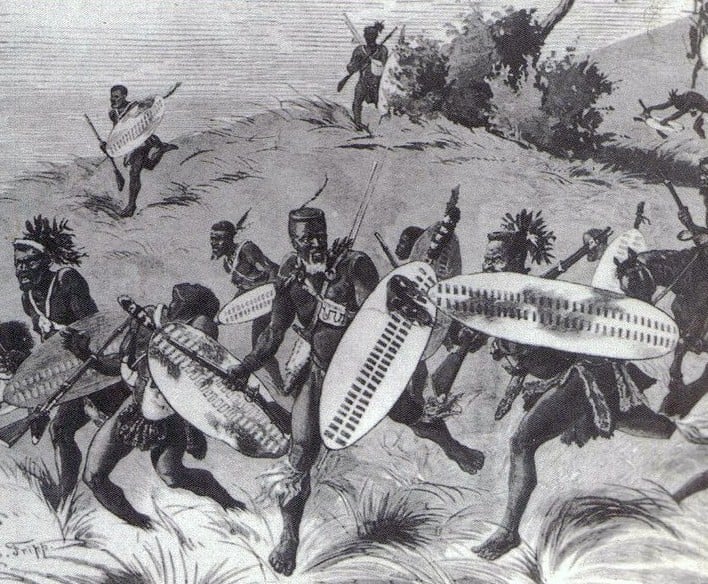
As you can imagine, conflict erupted between the Dutch Boers and the various African tribes they encountered. Military skill thus became key for the Voortrekkers as they further invaded more lands.
Armed with rifles and long knives, the Boers drove tribes like the Ndebele further north and took their children as slaves. In some cases, peace treaties were formed.
After winning the Battle of Blood River against the Zulu, the Voortrekkers declared the Republic of Natalia in 1838.
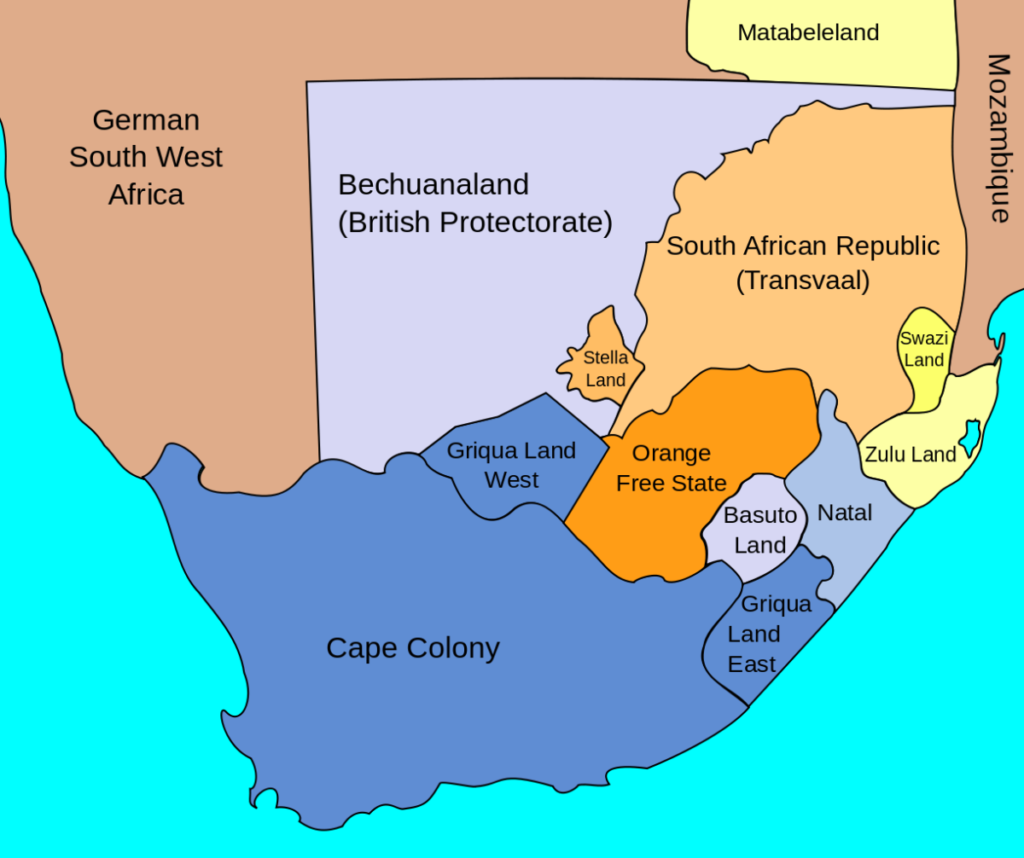
The Transvaal became an independent Boer republic in 1852, and the Oranje Vrystaat (Afrikaans for Orange Free State) followed in 1854, both of which had political connections to The Hague.
The Boer Wars
As the British Empire expanded, Lord Carnarvon (British Secretary of State for the Colonies) wanted to unite the British colonies, independent Boer republics and independent African kingdoms in South Africa into a confederation under British control.
In 1876, he realised that this could not be achieved peacefully.
The Transvaal was in serious financial trouble after a war between the Boers and the Pedi — the largest African kingdom in the north of South Africa. Lord Carnarvon seized the opportunity, and the British annexed the Transvaal in 1877, renaming it the Transvaal Colony.
A couple of years later, the British launched the Anglo-Zulu war, while non-violent Boer opposition grew in the Transvaal. Dutch settlers still in the Cape Colony began supporting their brothers in the north as they protested for independence.
The First Boer War
In 1880, a disagreement over taxes with the British became the final straw for the Dutch Boers.
Led by Paul Kruger and Piet Joubert, almost 10,000 Boers gathered and proclaimed the restoration of the Transvaal Republic — and so, the first Anglo-Boer war began.
The red uniforms of the British made them easy targets for the skilled Afrikaner riflemen, who also knew the terrain better than the anglophones. The British suffered heavy losses at the battle of Laingsnek and Schuinshoogte, forcing them to retreat.
Reinforcements from Newcastle arrived and marched on a Boer outpost at Majuba, whom the Boers lured into the mountains and slaughtered. The embarrassing British defeat at Majuba in 1881 concluded the first war.
The Second Boer War
The discovery of gold in 1886 on the Witwatersrand, near Johannesburg, changed everything in the region and motivated the British to retake the land.
By 1890, South Africa was the largest producer of gold in the world, employing thousands of African and European people, and bringing prosperity to the Boer republics.
The Cape Colony, still under British rule, was no longer the strongest region in southern Africa.
Prospectors rushed to Johannesburg from all over the world, especially Europe. The Transvalers saw these Uitlanders (foreigners) as a threat to their independence and gave them restricted rights. This caused further strain between the British and Boer governments.
Meanwhile, the British were nervous that the Transvaal would expand into territories on the coast. The Boers had access to a harbour in modern-day Mozambique, but they were yet to own any ports for themselves.
Control of the seas was the only advantage that the British had in southern Africa at this point, having earlier annexed Natal.
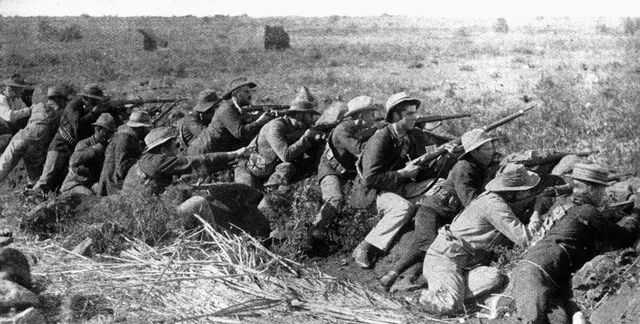
In 1895, 100 British soldiers launched the Jameson Raid on Pretoria, without permission from the crown. They were overwhelmingly defeated by the Boers and reprimanded by British command.
It was only in 1899 that the second Anglo-Boer war officially began. Anticipating a British attack, the Boers struck first, taking out major British towns in Natal. Well-armed and financially strong initial attacks by the Boers were successful.
But when the British General changed, and new tactics were implemented, the tables turned. In 1900, the British took back their towns and marched 400,000 men north to the Boer republics.
Overwhelmed by the sheer number of men, the Dutch Boers lost control of both the Transvaal and Orange Free State. But they were not done fighting.
The Boers reverted to guerilla warfare, in a series of surprise attacks that dragged on for years. In response, the British initiated the scorched earth policy, whereby anything that could be used by the enemy was burnt to the ground.
Boer survivors were forced into concentration camps where many civilians died of hunger or disease.
The Boers were forced to surrender in 1902, bringing an end to the final Anglo-Boer war. The Transvaal, Orange Free State, Natal and the Cape Colony were unified into the Union of South Africa in 1910 under the British Empire.
Apartheid
The system of racial oppression in South Africa, known as Apartheid (1948-1994), cannot be directly linked to the Dutch, as by this time, the Afrikaner communities identified themselves as distinct people.
But the ideologies passed down to them from the first Dutch settlers, slave traders, and Voortrekkers are evident in the white-supremacist policies of the Apartheid regime.
In short, Apartheid was a system that separated race groups classified by the ruling National Party (NP) into various zones around South Africa. Afrikaner Nationalism was at the heart of its ideology, which classed white citizens as superior.
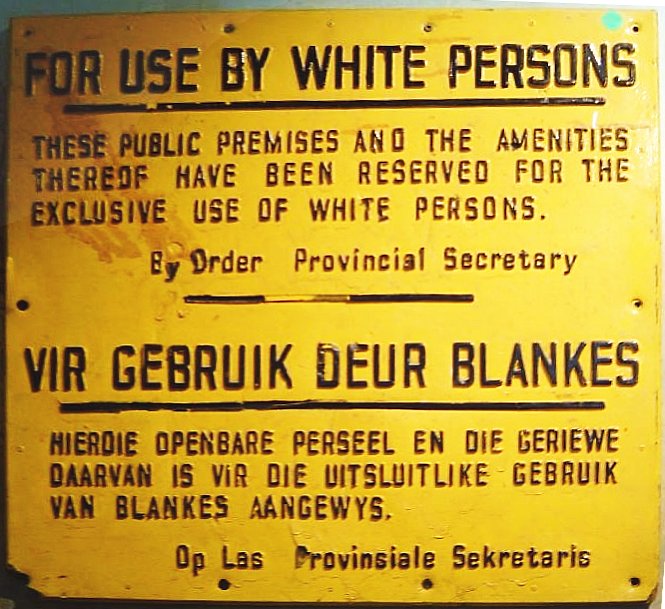
Inequality across the zones was substantial, and education and job opportunities for non-whites were limited, pushing them into cycles of poverty.
Non-white citizens were given fewer rights — including the inability to vote. Intermarriage between the races was illegal, and friendships with different race groups were considered suspicious.
It is a painful and complicated chapter of South Africa’s history, which I will not expand on here. Even so, it is important to learn more about Apartheid in South Africa.
The Dutch had a majorly influential role to play in what would become the Republic of South Africa. What I’ve covered in this article is, of course, only the tip of the iceberg, but I hope you now know something about the Dutch and South Africa that you didn’t know before.
What do you make of the Dutch involvement in South Africa? Tell us in the comments below.
Feature Image: Charles Davidson Bell/Wikimedia Commons/Public Domain


The translation of Groot Trek is wrong here. The most common usage of the word Trek is pull yes, but the other meaning, which is applicable here means A long and arduous journey. I guess its the same word as used in the bike brand.
I was thinking about that. Seems that the word “trek” is cognate with the Indo-European word for “drag” or “pull” and the Europeans have used that word for many things. In America it has even been used as a synonym for gully or ravine, in the English word “draw”. It gets used for everything, seems like.
Like the Indo-European ancestor of the word “britches”, the word “broke”. Apparently the Celts found that the “broke” tunic or whatever, which became “breeches” were more adaptable for hard work. (The Romans of course found them barbaric). But also used for things like: “The whale breeched the water”—“broke” the surface
https://www.youtube.com/watch?v=nphWLBjckJI
South African History 1652 -1902 Culminating in the Anglo Boer War & Battle at Spion Kop
https://www.youtube.com/watch?v=TdmZDHVYRoA
The resource on the internet so far form many different perspectives and takes, since the only single narrative was given in South Africa.
Cape Town The history occurring on its land Relevant Reading Material (Dissemination important facts/events)
https://docs.google.com/document/d/1KkAe-T6ez8bTGFaNGXUHHpY9bEKqvLPkb3iXtR121gs/edit?usp=sharing
Key British Arciologist kicked out of South Africa in 1970.
Great Zimbabwe & The First Cities of Southern Africa // History Documentary
Features references to Koi king and queen. As well culture. Inner African insight of trading with Chinese and ending Portuguese and what trade and money system they had. Much more.
Also more trade routes.
May find what looking for here.
Great Zimbabwe & The First Cities of Southern Africa // History Documentary, right the link: https://www.youtube.com/watch?v=CdKD4-fVnyE&feature=youtu.be&fbclid=IwAR1rr9ih0oo6-JZ4PCQ-Uc06dxjO7kduRwp4VBj2k9lb07jZu7X4KY3lGfY
SUID – AFRIKAANSE SPOORWEE – WAAR HET ALLES BEGIND?
1820-1910 all states and perspectives..
https://www.youtube.com/watch?v=EajslY07KUU
There is a fundamental misunderstanding here of who the Boer people actually were! The Boers WERE NOT DESCENDED from the Dutch! The Boers were / are descended from the German Protestant / Frisian / French Huguenot / Danish refugees that Holland EXPELLED to the Cape. The Dutch were trying to get rid of their ethnic refugee minorities within the Netherlands & decided to send some of these refugee minorities to the Cape after forcing them to sign long contracts. The Dutch in fact were the original OPPRESSORS of the Boers & their ancestors. Furthermore: the Boers are also significantly descended [ 7 – 10 % ] from non-European peoples namely from Indian / Malay / Khoisan & Yoruba individuals that the Dutch East India Company brought over as slaves. The non-European ancestry of the Boer people [ as well as the numerically larger Cape Dutch population ] was often hidden by the establishment because the British in particular wanted to classify [ or rather mis-classify ] the Boers as “White” in order to force them into the British created South Africa of 1909 as legal citizens so that they could prevent the Boer Republics from being restored. The British could not take a chance at leaving the Boer people outside of their direct control.
The Boer people are essentially an indigenous [ noted by many authors like James Morris / Sidney Robbins / Oliver Ransford ] homegrown African people who started out an nomadic pastoralists when they started out as Trekboers from 1670 onwards. The Boers are called Boers because it was shortened from the term Trekboer. Not all Boers were “farmers”! That was something they got into LATER once they settled down on the Cape frontier by circa 1777 once their natural migration pattern was stopped.
The first Boer Republics were created in 1795 on the Cape frontier out of the districts of Swellendam & Graaff-Reinet in revolt against the Dutch Colonial Power. The historical oppressors of the Boer people! The Boers adopted the red / white / & blue horizontal tri colour flag for these first Boer Republics in 1795 as it was seen as a republican flag with the colours of France / the United States of America [ who had republican revolutions of their own that the Boers were influenced & inspired from ] not just those of republican Netherlands. This tri colour was prominent within the flags of the later more notable Boer Republics across the Orange River [ the Orange Free State Republic & the Transvaal Republic ] in the wake of the so called Great Trek. [ The term the Great Trek was coined in the 20th century by Cape Dutch based so called Afrikaner Nationalists who used it to co-opt the smaller Boer people! ] Canadian Professor Wallace Mills notes that the Boer tradition of declaring republics PREDATES the arrival of the British! This is yet another clear characteristic that demonstrates the indigenous nature of the Boer people as only a local homegrown people are capable of waging a freedom struggle for independence within their own autogenous home grown republic.
Apartheid was created by the British in the late 19th century within the British colonies of the Cape & Natal then later expanded upon by the Cape Dutch based Afrikaner regimes from the 1940s onward. The Cape Dutch are the descendents of those who coalesced in & around Cape Town at a time when the Trekbeors [ the ancestors of the Boer people! ] were trekking AWAY from Cape Town [ from 1670s onwards & all throughout the 1700s ] & consequently away from the people known as the Cape Dutch. The Cape Dutch are now found not only in & around Cape Town but also in & around Johannesburg after they came out during the gold rush of the late 19th century and control the Afrikaner designation.
The main architects of Apartheid were not from the Boer people & most were not even from any of the local so called White population groups. The architects of Apartheid were: Cecil Rhodes [ British immigrant ] / Theophilus Shepstone [ British administrator ] / Hendrik Verwoerd [ Dutch immigrant ] / D F Malan [ Cape Dutch Reverend of Huguenot origin ] / Werner Eiselen [ son of German immigrants ]. The only figure on this list who could be considered to be from any local so called White population group would have been D F Malan as all the others were immigrants.
The truth about the Boers appears to be obscured to too many people because they simply have not done the required research & have too lazily accepted the many lies & slanders that the British & Afrikaner establishment have issued against the Boers. The fact of the matter is that the Boers have nothing to do with the Dutch nor the Cape Dutch nor the White population nor even to the White South African population. The Boers are descended from multi-cultural / multi-ethnic / & multi-racial roots who speak an African based language [ started by the Khoisan ] that were formed into a distinct indigenous African people / nation once they emerged as Trekboers on the Cape frontier during the 1700s & had established internationally recognized Boer Republics that were defended against from the incursions of British Colonialism but ultimately conquered after the British killed off over HALF of the total Boer child population within the British created concentration camps. Furthermore: The Cape Dutch in fact helped the British to round up Boer civilians into these British run concentration camps thereby demonstrating that the Afrikaners are as dire a treat & enemy of the Boer people as were the British & the Dutch prior.
This is a fantastic reply to a article about the Dutch, the British in contrast to the Boers. In a half hour of reading this rather complex history, I now understand it fairly well. I am a German/American immigrant to the USA and my wife is Dutch 3rd generation.
It seems to me that this story needs to have a wider readership. It was evident to me that the British were responsible for much of the racism in South Africa.
Just like the racism displayed by English fans in the recent European soccer championship.
Dr. Rudi Erwin Moerck see: Dr-Rudi.com
Yet it is also part of a sad truth that a considerable part of Afrikaaners are racist to this day. I have met quite a few, sadly.
Very interesting to learn about our origins. We are literally the progeny of a dropped colony.
Fantastic read! Thanks
Bro the Boers are white lol
This is an excellent, factual analysis and response to this weak and subjective article.
Most people, who write about the Boer history, are too lazy to think for themselves and do a bit of research, or they intend to be mischievous due to some ideological malfunction.
The Boers were created on African soil and always just wanted to live independently in peace. They never acted aggressively unless they had to respond to an attack or imminent danger.
They were stalked by the British who would not set them free after they literally bought them from the Dutch for $6m in 1814 ( as if they were the Dutch’s property to sell in the first place.)
In the end, after the Anglo-Boer war in 1902, the Boer identity was destroyed by the British and those who created the Afrikaner ethnolinguistic identity.
Seems this article has a lot of emphasis on making the Boere people out as the bad people while trying to minimize everything that would make everyone else look bad.
They were responsible for Apartheid, so yes they were bad. And unfortunately my experience of having lived in South Africa on an Afrikaaner farm near Mbombela (formerly Nelspruit) has shown me that many Afrikaaners are still racist. Hard pill to swallow, but it is a sad reality in many parts of South Africa.
Blows my mind how people can settle in other peoples territory and be racist toward the indigenous people there. Go back to where you came from?
It’s Khoikhoi, if you’re going to make reference to my people make sure you come correct.
period.
The Afrikaner Boers are bad people… just like the British…
That’s major accusations in the comments, yes we are a complexed people and have a complex ancestry. We don’t even have a monarch, king or tribal leader as seeing many claim we are an indigenous pastoral nomadic tribe… So…should we not debate this then? Will we accept Orania or even the bloodlines of fallen generals as a new royal monarch over a sovereign people? I doubt God has chosen us, look where we are now.
Too bad the indigenous peoples couldn’t themselves kicked the living s—- out of the Boers and Brits.
The impotence of the indigenous supports the concept that Blacks are inferior. White mercenaries smugly state that fighting Blacks was like shooting coconuts.
Four million Whites tule over forty million Blacks. Not a great recommendation for their propensity. It took outside sanctions to choke off the White Supremacist government and bring it to its knees.
Of course we’ll trained African soldiers can hold their own as our military well knows.
Cruelty and oppression is distributed evenly throughout but successful resistance is not.
Further reading: Try The Covenant by James Michener. This is a novel, but like many of his novels is very much based on fact and starts ‘at the beginning of time’ and goes up to just before the end of apartheid (the book was published before the end). Well worth a read.
It is clear to me, as an American (soldier) in the Marines, that the British are the Baumeister of Racism in South-Africa. They gave their racism-politics a Dutch name, to defer “their blatant inhumanities” to the former Dutch rulers from Kaapstad, Oranje-Vrijstaat and Natalia (to name a few). What a cowardly people, the UK’ers.